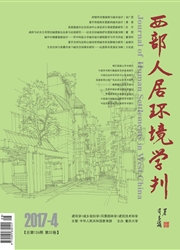

 中文摘要:
中文摘要:
位于大理白族自治州云龙县的诺邓村,历史上是滇西著名的商业中心之一。盐井的出现和盐业经济的发展改变了诺邓村发展的轨迹,也改变了聚落发展的内在机制和模式。本文拟以其"生命轨迹"盐业经济为切入点,研究盐井从诞生到发展的过程中,经济模式和商业贸易如何对整个聚落的布局、空间形态、单体建筑等方面产生的影响。其次,结合诺邓村为典型山地聚落的特点,将其合院建筑空间和坝区白族合院进行对比研究,找出白族民居山地化的演变模式;并通过对其公共建筑和建构技术以及装饰文化研究,争取在更大范围内去探寻这个千年古村形成的内在因素以及各种因素的内在联系。
 英文摘要:
英文摘要:
Nuodeng Village, located in Yunlong County of Bai Autonomous Prefecture of Dali, was once a famous commercial center in western Yunnan Province. The presence of salt well and development of salt economy have greatly changed the development pattern of Nuodeng village, as well as the internal mechanism of settlements. This paper illustrates the ways of how the economic pattern and commercial trade have exerted influence on the overall layout, spatial pattern and single building in the development process of salt well. In addition, given that the village is a typical mountainous settlement, it conducts a comparison between its courtyard building and courtyard buildings of Bai nationality in the dam area in order to find out the evolutionary models of Bai's settlements. Efforts are also made to explore the internal factors of the formation of the settlements and internal relations of those factors by studying the decoration style and techniques of the public buildings.
 同期刊论文项目
同期刊论文项目
 同项目期刊论文
同项目期刊论文
 期刊信息
期刊信息
